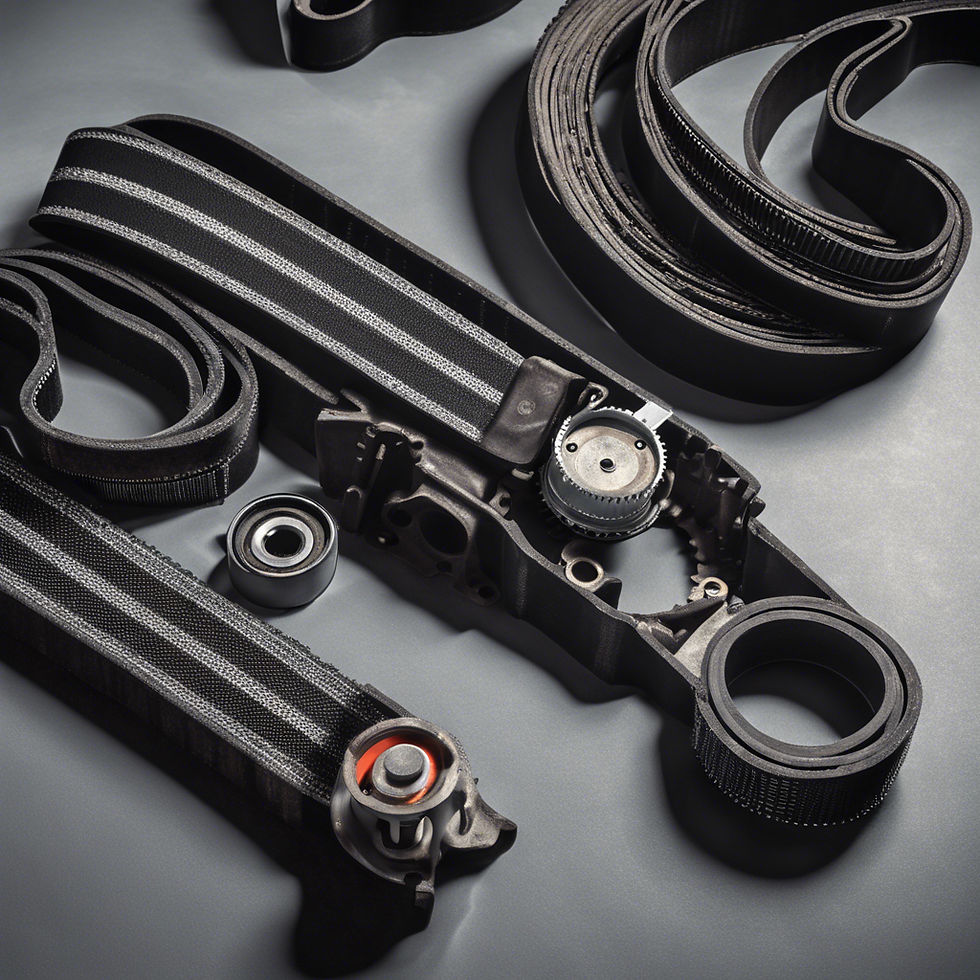As we cruise along the open road, our cars quietly work behind the scenes to keep us safe and comfortable. One often-overlooked hero in this symphony of automotive engineering is the humble belt. While most of us are familiar with seat belts, there exists a diverse array of belts within our vehicles that play crucial roles in keeping everything running smoothly. In this exploration, we delve into the fascinating world of car belts, shedding light on the different types that silently ensure our driving experiences are hassle-free.
1. Serpentine Belts
The serpentine belt is akin to the multitasking maestro of your car's engine. Serpentine belts wind their way through various engine components, driving essential systems like the alternator, power steering pump, water pump, and air conditioning compressor. This belt is crucial for ensuring that power is effectively distributed throughout the engine, making it a vital component for overall performance.
2. Timing Belts
Contrary to serpentine belts, timing belts are responsible for the precision coordination of engine components. They synchronize the rotations of the crankshaft and camshaft, ensuring that valves open and close at the correct times during the engine's operation. A failing timing belt could lead to catastrophic engine damage, emphasizing the critical role it plays in maintaining engine efficiency.
3. V-Belts
V-Belts, with their distinctive cross-section shape, are a common sight in older vehicle models. While modern cars have largely transitioned to serpentine belts, some older vehicles and machinery still utilize V-belts to transmit power from the engine to various parts like the alternator and cooling fan. Their simple yet effective design has stood the test of time, proving to be reliable power transmitters.
4. Ribbed Belts
Also known as micro-V belts, ribbed belts are a refinement of the V-belt design. These belts feature multiple small grooves or 'ribs' on the inner side, providing increased surface area contact with pulleys. Ribbed belts are commonly found in newer vehicles, offering improved grip and efficiency compared to their predecessors.
5. Seat Belts
While not directly related to engine performance, seat belts are arguably the most familiar type of belts in a car. Designed to keep passengers safe in case of sudden stops or collisions, seat belts are a vital safety feature that has saved countless lives over the years. Their retractable design and locking mechanisms ensure that occupants are securely restrained during travel.
In conclusion, car belts are integral components that work tirelessly behind the scenes to ensure our driving experiences are smooth and safe. Understanding the various types of belts in your vehicle can provide insight into the intricate mechanisms that power our cars. So, the next time you buckle up and hit the road, remember the unsung heroes that silently keep your vehicle running like a well-oiled machine.

Comments